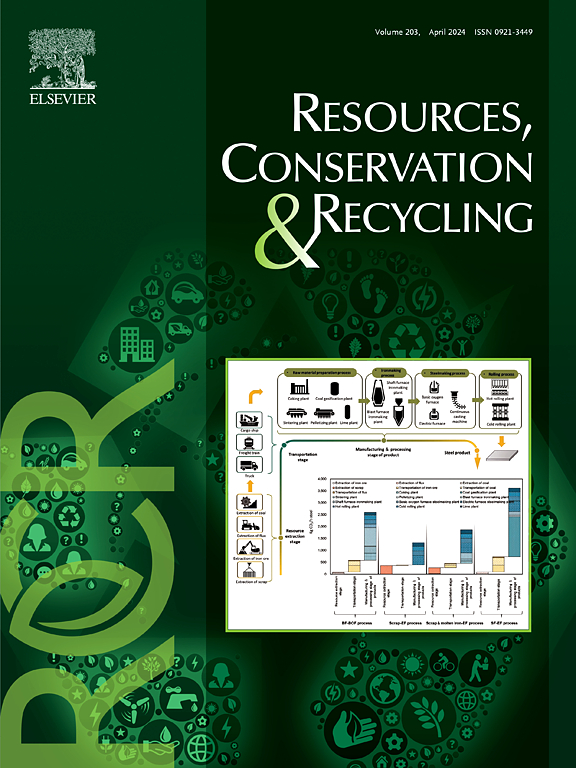Demolition waste from the infrastructure network in China: Retrospective and perspective
IF 11.2
1区 环境科学与生态学
Q1 ENGINEERING, ENVIRONMENTAL
引用次数: 0
Abstract
Infrastructure demolition waste (IDW) plays a crucial role in waste recycling and reuse. However, the sources and spatiotemporal distribution of IDW in China remain insufficiently understood. To address this gap, we develop a provincial IDW assessment model to analyze the spatiotemporal distribution patterns and evolutionary trends of IDW from 1949 to 2100. Our findings reveal pronounced regional disparities in IDW distribution between southern and northern provinces. Notably, Guangdong, Sichuan, and Shandong collectively contributed 15.49 %–24.25 % of the national IDW annually over the study period. The total IDW in China follows a volatile trajectory, increasing from 110.20 Mt in 2000 to a peak range of 317.43–1084.72 Mt around 2050, before declining to 59.72–393.12 Mt by 2100. Moreover, strategies such as extending the lifespan of infrastructure and improving material recycling rates are projected to reduce IDW by 46.07 % in 2050 and 74.64 % in 2100.

求助全文
约1分钟内获得全文
求助全文
来源期刊

Resources Conservation and Recycling
环境科学-工程:环境
CiteScore
22.90
自引率
6.10%
发文量
625
审稿时长
23 days
期刊介绍:
The journal Resources, Conservation & Recycling welcomes contributions from research, which consider sustainable management and conservation of resources. The journal prioritizes understanding the transformation processes crucial for transitioning toward more sustainable production and consumption systems. It highlights technological, economic, institutional, and policy aspects related to specific resource management practices such as conservation, recycling, and resource substitution, as well as broader strategies like improving resource productivity and restructuring production and consumption patterns.
Contributions may address regional, national, or international scales and can range from individual resources or technologies to entire sectors or systems. Authors are encouraged to explore scientific and methodological issues alongside practical, environmental, and economic implications. However, manuscripts focusing solely on laboratory experiments without discussing their broader implications will not be considered for publication in the journal.
 求助内容:
求助内容: 应助结果提醒方式:
应助结果提醒方式:


